Nebulization

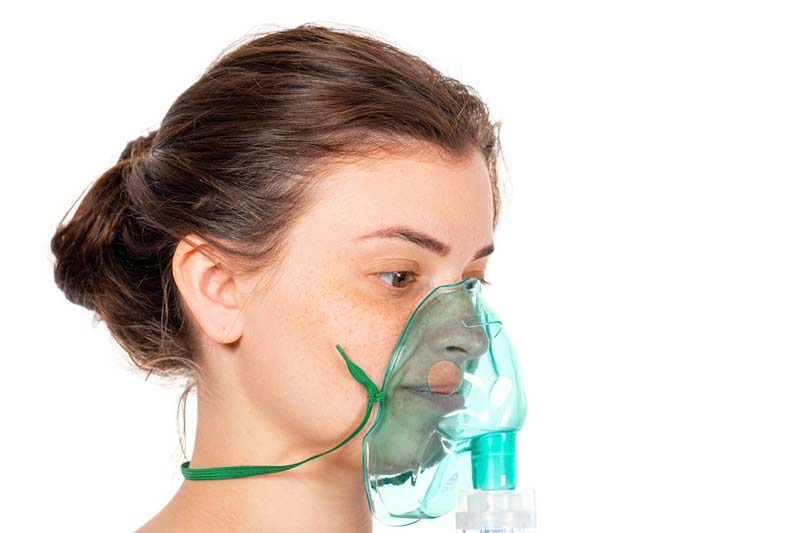
Nebulisation converts liquid medicine into a mist or aerosol which is inhaled into the lungs with the help of a mouthpiece or a mask. Nebulisation is a commonly used practice for dispensing medicine in treating acute and chronic respiratory diseases like Asthma and COPD (chronic obstructive pulmonary diseases).
An electronic device called a nebuliser is used for the nebulisation process. There are mainly three types of nebulisers: Jet, ultrasonic and mesh. Your doctor can prescribe a suitable one for you as per the type of liquid medication, your preference, and disease condition.
Typically, nebuliser comes in home (tabletop) and portable versions. Jet nebulisers are bigger and they require an electric outlet to function. While portable nebulisers are smaller and battery operated. They are perfect for travel.
Nebulisers are especially useful for dispensing medications to infants, children, and elderly patients. They work great for those who have trouble using handheld inhalers or have poor strength for inhaling via mouth. Nebuliser does not require any breathing coordination, you just inhale medicine mist for 10-15 minutes with normal breathing.
Nebulisers are also helpful in dispensing a large dose of medicine at a faster rate. This feature provides great help in managing acute asthma symptoms.
Following a good nebulisation practice is one of the important aspects of successful nebulisation treatment. Doctors, paramedics, patients and caregivers should have adequate information and knowledge regarding “Good nebulisation practice or GNP”.
Scientific studies confirm that inconsistency in following the “Good nebulisation practice” may lead to inadequate drug delivery and predispose patients to infection transmission.
Good nebulisation practice involves:
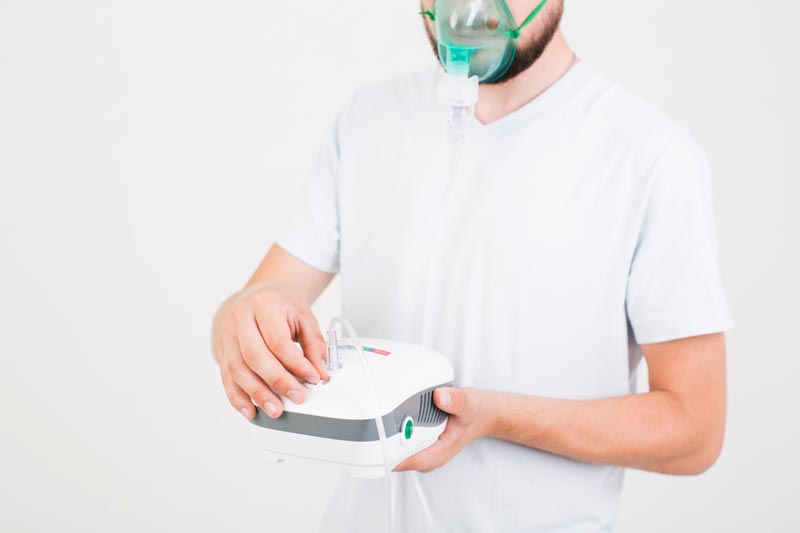
Proper selection and fitting of face mask or mouthpiece:
It helps in avoiding wastage of medication, delivering a proper dose of medicine to the lungs and reduce the risk of side effects caused by medications.
Know the type of medications that you are using for nebulisation:
It is important to know what type of medications are compatible and can be used in nebulisation. Also, you must be aware of the exact quantity of medication (fill volume) that you should put in the nebuliser.
Nebulisation time:
It should ideally be between 5-15 minutes. Long nebulisation time causes inconvenience, resulting in reduced patient compliance.
Nebulisation frequency:
Patient or caregiver should know how many times he/she has to perform nebulisation therapy per day.
Correct technique of using nebuliser:
Patient or caregiver should know the correct technique of using nebuliser.
Proper cleaning and disinfection of nebuliser accessories (medication chamber, face mask or mouth piece):
Nebuliser accessories should be clean and disinfected properly after each use. When a face mask or mouthpiece is not cleaned properly, it leads to bacterial growth and may cause secondary infections in patients.
Avoid sharing of nebuliser accessories like face mask or mouthpiece among patients:
Each patient should have a separate nebuliser kit. Sharing nebuliser kits or nebuliser accessories may cause the spreading of infection from one patient to another. Each nebuliser kit should be cleaned properly after each use.
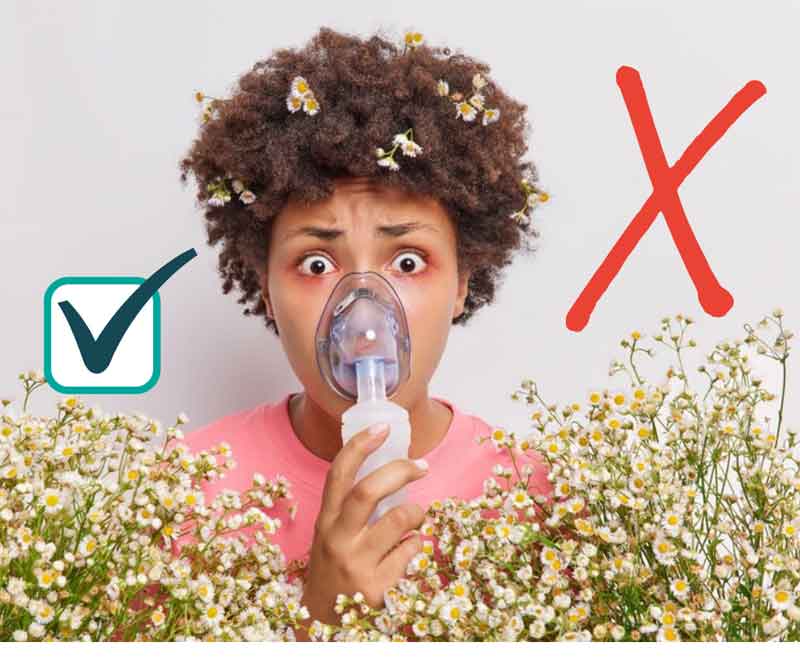
Myth 1: Nebulisation is addictive.
Fact 1: Nebulisation is not an addictive process. It is an effective way to deliver inhaled medications directly to the target organs (lungs and airways). Nebulisation uses the same medicines as used in inhalers and oral medications. Nebuliser just converts the liquid medicine into mist or aerosol and makes it easier to reach deep into the lungs.
Myth: 2 Nebulisation is used only for treating asthma.
Fact2: Nebulisation is not only used for treating asthma and delivering asthma medication, it can be used for treating various other respiratory diseases like COPD (chronic obstructive pulmonary diseases), Bronchiolitis, cystic fibrosis, bronchiectasis, pulmonary hypertension and allergic congestion.
Myth: 3 Nebulisation requires a higher dose of medicine and causes more side effects than oral medications.
Fact 3: Nebulisation coverts the liquid medicine into mist, so that it can easily reach the target organs (lungs and airway), by inhalation. This process helps in delivering prescribed medications directly to the lungs, so it requires a less dose of medicine and causes fewer side effects. Oral medications travel through the bloodstream and then reach the target organs. They require a larger dose of medicine and cause more side effects.
Myth: 4 Nebulisation is not suitable for infants and small kids.
Fact 4:Nebulisation is a safe and effective process of delivering medicines for infants and small kids. Infants and small kids cannot use inhalers properly as it requires breathing coordination to deliver the medicine to the lungs. Nebulisation does not require any breathing coordination and works great with small kids and infants who have respiratory troubles. Nebulisation helps in the easy delivery of medication to target organs and provides quick relief.
Myth 5: Nebulisation is a complicated process.
Fact: 5 No, nebulisation is not a complicated process, but you have to learn the correct technique before using it. Talk to your doctor or healthcare provider and clear your doubts regarding proper use of nebuliser. After that, you can perform nebulisation even at home, if your doctor recommends it.
Myth 6: Nebulisation can lead to spread of COVID-19 infection.
Fact 6: As per British Thoracic Society, nebulisation is not a viral droplet generation procedure. The droplets generated are from the machine (liquid bronchodilator drug particle), not the patient. Therefore, nebulisation is “not a viral droplet generation procedure. However, it is always advised to practice nebulisation safely by following basic cleaning procedures recommended by the manufacturer of the nebuliser device.
Nebulisation is a recommended and effective way to deliver inhaled medications to kids for treating breathing issues caused by acute or chronic respiratory diseases. It helps in dispensing prescribed medication directly to the target organs (lungs and airways).
Nebulisation can be performed in kids under the age of 6 with the help of a face mask. Kids age 6 or above can use a mouthpiece to deliver inhaled medications deep inside the lungs. Along with asthma, nebulisation is also used for treating other respiratory diseases like bronchiolitis, cystic fibrosis and allergic congestion.
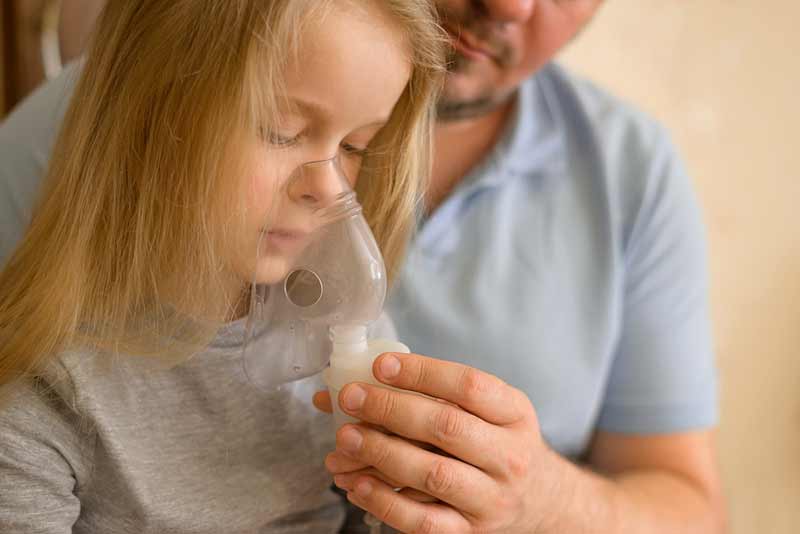
Nebuliser has four parts: a medicine cup, a tubing, a compressor and a mouthpiece or face mask. Assemble the parts of nebuliser properly, before starting the nebulisation process. Read all the instructions regarding medication administration and follow them carefully.
First, fill the medicine cup with prescribed medication. Connect one end of the tubing to the medicine cup and other ends to the compressor. Place a mouthpiece or face mask on your child’s face and ask your child to sit in the upright position. Make sure he is comfortable while using a face mask or mouthpiece and keep the mask on for the entire nebulisation process. While using face mask, it is recommended to inhale the mist via mouth to maximize the lung deposition of the medicine. However, while using mouthpiece, patients can close their nose to inhale the mist via mouth.
Plugin and turn the nebuliser on. Breathe in for 5-15 minutes or till the medicine chamber is empty [indicated by a fluttering sound from the nebulizer machine]. Clean the nebuliser after each use.
Although nebulisation seems like a simple process, many parents face some common challenges while performing nebulisation. Sometimes small kids cry and feel anxious at the time of nebulisation, or keeping kids in the upright position for 15 minutes is another common challenge.
Experts suggest making nebulisation a fun-filled activity. Have some fun activity like watching a show or reading a book at the time of nebulisation. This will help in making nebulisation process easier and keep your child calm and less anxious.
Talk to your doctor if you have questions or difficulty in using nebuliser with your kids.
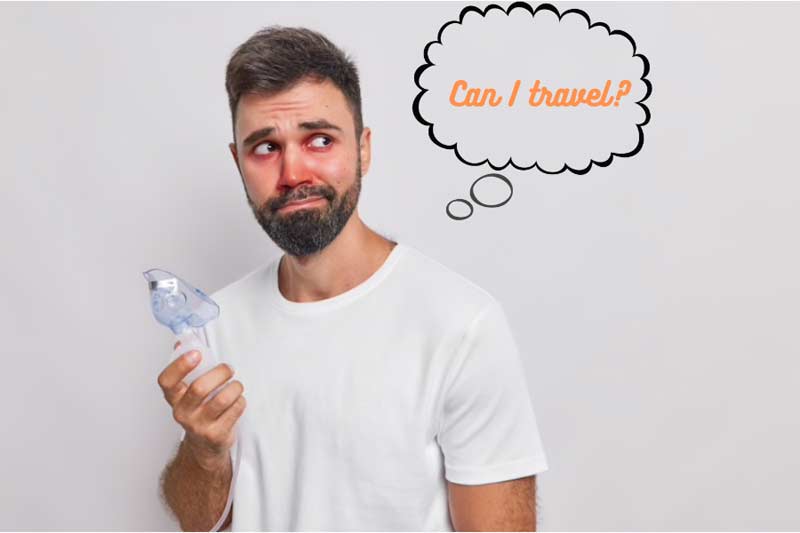
If you or your loved one have asthma or other chronic respiratory disease conditions, then you have to take extra care while travelling. Packing your essential medications and nebuliser is a must for staying healthy during travel.
Here are a few tips that can help in nebulisation during travel.
It is important to use and clean nebuliser as per your doctor's instructions. Using your device properly plays an important role in your acute or chronic respiratory disease management. If you do not clean and disinfect your nebulizer properly, it creates a favourable environment for bacteria to grow and cause secondary infections.
Ideally, clean nebuliser accessories (medicine cup, mouthpiece or face mask) with water.
American lung association recommends the following steps to clean and disinfect your nebuliser.
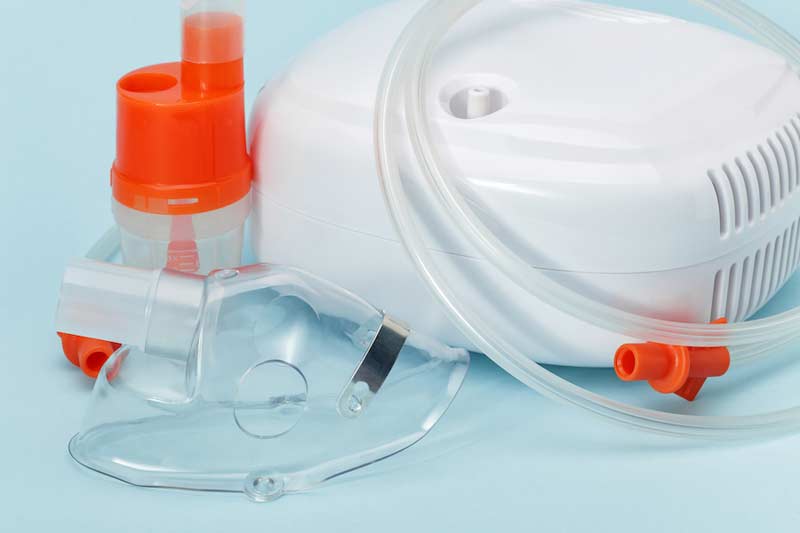
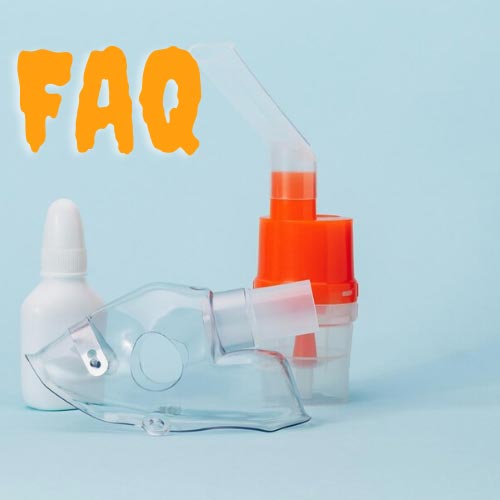
Nebulisation is used for dispensing various inhaled medications (bronchodilators, corticosteroids and mucolytics) to treat respiratory issues like Asthma and COPD (chronic obstructive pulmonary diseases). This process helps in the quick delivery of inhaled medications deep into the lungs and causes fewer side effects than oral medications.
Nebulisation is especially helpful for children, infants and elderly who have trouble in using handheld inhalers.
Nebulisation and inhaler therapy work on the same principles. They both are effective ways to deliver the inhaled medications to the target organs (lungs and airways) and used frequently in the treatment of various respiratory diseases, including asthma and COPD. Nebulizers are the preferred option to deliver inhaled medications to patients who are not able to effectively use handheld inhalers in the first place.
Despite having many similarities, they have some differences too. Inhaler is a smaller handheld device. They are easy to carry and do not require any kind of set-up to dispense the medications. While nebuliser is bigger and requires a proper set-up (either electric socket or battery-operated) for functioning. However, newer generation of nebulizers are handy and portable.
Inhalers take less time (1-2 minutes) in dispensing medicine but they require breathing co-ordination for proper delivery of inhaled medication to the lungs, while nebuliser takes more time (5-15 minutes) to dispense the medication but they did not require any breathing coordination.
Using inhalers can be tricky for small kids, elderly and people with poor respiratory flow and hand-to-breath coordination. While using nebuliser offers great help for them as they do not require any breathing coordination or special technique to use them.
Yes, you can nebulise at home after learning the correct technique from your doctor or healthcare provider. Follow all instructions given by your doctor to achieve the desired results. Proper cleaning of nebuliser is another important aspect of home nebulisation therapy. You should carefully follow the manufacturer’s cleaning instructions to reduce the risk of contamination.
Studies suggest mouthpiece as a better option than face mask, as it helps in greater lung deposition of medicine and reduces facial or ocular exposure. However, a face mask is helpful for children, unconscious patients or those patients who face difficulty in holding mouthpiece in place. You can discuss with your doctor and can decide what will work best for you?
© 2025 Healthy Lungs.